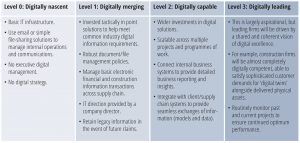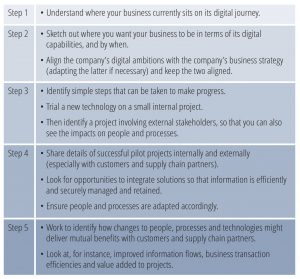How do you know what ‘good’ looks like when it comes to systems adoption and digital maturity? GroupBC and Eque2 set out some simple steps for improvement
Poor digital adoption equals poor productivity. With an infrastructure pipeline of nearly £600bn to spend over the next decade, the UK should be in the midst of a construction bonanza. However, with uncertainties such as Brexit affecting investment plans, as well as the skill shortage in the workforce, the construction sector is still struggling with poor margins and low productivity.
Part of the reason is the industry’s failure to embrace digital technologies as a whole. While many Tier 1 or major contracting firms are well advanced on digital transformation, many smaller and mid-sized contractors, consultants and architects, as well as housebuilders, lag behind, particularly in use of technology for project delivery and adoption of building information modelling (BIM).
The industry’s historic underinvestment in IT is hampering efforts to modernise and to improve productivity (and profitability).
The headline findings from the recent GroupBC and Eque2 survey on digital adoption across the industry confirm there are widely varying levels of knowledge and understanding relating to key areas of construction IT. This lack of understanding plus an aging workforce is one of the factors inhibiting digitisation in construction.
Many companies reported mistakes made after their organisations had wrongly issued information or had relied on outdated design information, not surprising when just over half (53%) could not name who was responsible for BIM within their business.
So, do you know where you sit in digital adoption and how to move forwards?
On the right path
GroupBC, the information management solution specialist, has recently released BC Projects, a simple, user-friendly solution that supports businesses as they progress on their path to digital maturity and enable them to compete for lucrative tenders, increase productivity and improve their margins.
Investing in a hassle-free solution that supports all project information management and collaboration needs – from a simple project folder capability for smaller works projects through to a workflow-driven, BIM Level 2-compliant CDE – ensures project teams become confident in the use of a single system to manage information, knowledge is recycled and clients build trust in your digital delivery abilities.
Visit groupbc.com for more information and download our free guide Choosing the Right CDE for BIM Level 2 Compliance.
Ayre Chamberlain Gaunt comments: “We’re deploying BC Projects for a client on a high-profile project initially, as we aim to embed BIM into the business. In the next phase, we will expand its usage across other projects and develop an intranet, to improve collaboration and sharing of best practice.”
Information maturity scale: where do you sit?
Here we summarise how to identify your information maturity scale and the best route to progressive adoption, enabling you to become more competitive in an increasingly digital environment.

Five steps towards digital differentiation
It’s not all about IT tools. Digital transformation is about having a coherent long-term vision of how technology will support and integrate with your key business processes and people, and with those of the people you do business with. As Mark Farmer pointed out in his Modernise or Die report: “The construction industry’s ‘collaboration problem’ is at the root of its change inertia.” When planning for change, businesses should consider the whole journey, starting with these five simple steps:

Tel: +44 (0)118 9028543
Twitter: GroupBC_Ltd
*Please note: this is a commercial profile.


![main_banner_2[3] digital maturity](https://www.pbctoday.co.uk/news/wp-content/uploads/2019/01/main_banner_23-1068x311.jpg)














